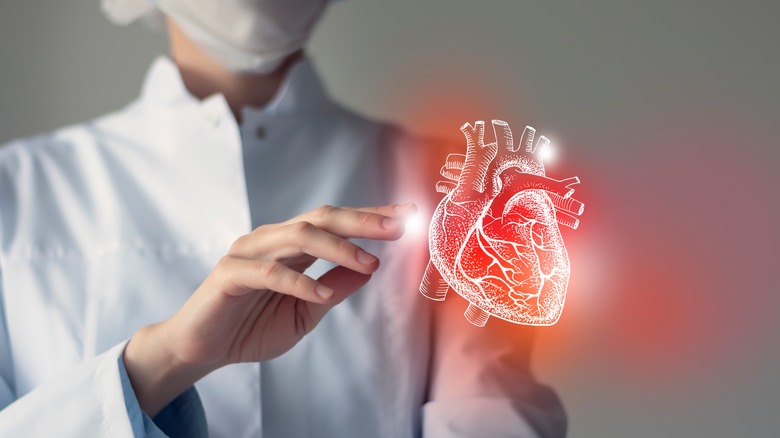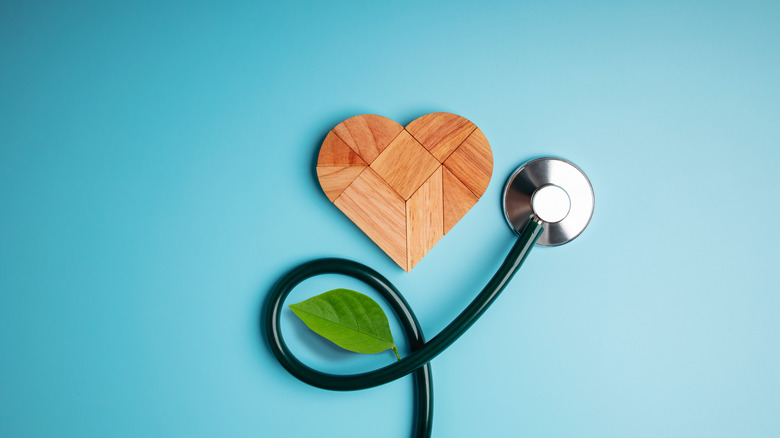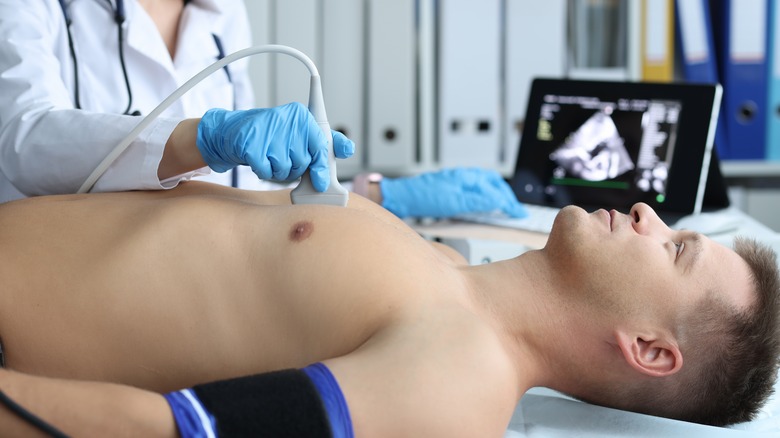A Comprehensive Guide To The Stages Of Hypertension
Hypertension, or high blood pressure, is a medical condition in which the force of the blood against the walls of the blood vessels is consistently elevated, per the World Health Organization (WHO). According to the Centers for Disease Control and Prevention (CDC), almost half of American adults have hypertension. The condition is often called "the silent killer" because it usually has no symptoms and can damage the body for years before any problems become noticeable, per the American Heart Association. According to the association, there are various stages of hypertension, and over time, the condition can lead to serious health problems.
This is why monitoring blood pressure regularly is important, especially if you have a family history of hypertension or other risk factors are present. Regular check-ups with a doctor, combined with lifestyle changes and medication if necessary, can help to prevent or manage hypertension and reduce the risk of developing serious health problems, per the Mayo Clinic.
How is blood pressure measured?
Blood pressure measurement is a simple procedure that can be performed in a doctor's office, clinic, or at home. Blood pressure is typically expressed in millimeters of mercury (mmHg) and is recorded as two numbers: systolic pressure (the higher number) and diastolic pressure (the lower number), per Healthline. The systolic pressure represents the pressure in the blood vessels as the heart pushes blood out while beating. The diastolic pressure, on the other hand, represents the pressure in the blood vessels when the heart is at rest between beats. According to the source, a normal blood pressure reading is around 120/80 mmHg, while a reading of 140/90 mmHg or higher is considered hypertension.
The auscultatory method is commonly used for measuring blood pressure. According to the McGill Physiology Virtual Lab, this involves inflating a blood pressure cuff around the upper arm to occlude blood flow and then slowly deflating the cuff while listening to the pulse with a stethoscope.
In addition to manual measurement, automated blood pressure monitors are also available for home use. However, note that blood pressure readings can fluctuate and may not always reflect the true state of your health (via Healthline). It's always best to have multiple readings at different times and to discuss the results with your doctor to determine the appropriate course of action.
What are the stages of hypertension?
Hypertension, or high blood pressure, is classified into five stages based on the reading of systolic and diastolic blood pressure, per the American Heart Association. These stages can help healthcare providers determine the appropriate course of treatment.
The first stage is normal blood pressure, where systolic blood pressure is less than 120 mmHg, and diastolic blood pressure is less than 80 mmHg. The second stage is elevated blood pressure, where systolic is between 120-129 mmHg, and diastolic is less than 80 mmHg. Individuals with prehypertension are at increased risk of developing hypertension and are advised to adopt lifestyle changes such as exercise and ingesting less sodium to prevent progression, per Healthline.
Stage 1 hypertension occurs when systolic blood pressure is between 130-139 mmHg, and diastolic blood pressure is between 80-89 mmHg. In addition to lifestyle modifications, medication may be necessary at this stage to control blood pressure and prevent further complications. Stage 2 hypertension, the fourth stage, is where systolic blood pressure is 140 mmHg or higher and diastolic blood pressure is 90 mmHg or higher. This stage requires more aggressive treatment and close monitoring to prevent serious health problems.
Systolic blood pressure that goes higher than 180 mmHg or diastolic blood pressure higher than 120 mmHg is classified as a hypertensive crisis, which is the final stage. According to the American Heart Association, this is considered an emergency and requires immediate medical attention to prevent serious complications, such as heart attack or stroke.
What causes hypertension?
Hypertension is a complex condition with multiple causes, some of which are well understood, while others are still being studied. According to the Cleveland Clinic, the most common causes of hypertension can be categorized into two groups: primary (essential) hypertension and secondary hypertension.
Primary hypertension, which accounts for most high blood pressure cases, is believed to result from a combination of genetic and environmental factors. Age is a known risk factor for primary hypertension. Also, obesity and having a family history of hypertension increase the risk of developing the condition, per the Cleveland Clinic. Other contributing factors include a diet high in sodium and a lack of physical activity which can cause decreased cardiovascular fitness.
Secondary hypertension is caused by an underlying medical condition. One known cause includes disease of the kidneys which can inhibit their proper functioning, leading to an increase in blood pressure. Disorders of the adrenal glands can also lead to increased production of hormones that cause high blood pressure, per the Mayo Clinic. Lastly, certain medications, such as birth control pills, nonsteroidal anti-inflammatory drugs (NSAIDs), and decongestants, can cause an increase in blood pressure, reports the Cleveland Clinic.
In some cases, the cause of hypertension may not be easily identifiable. Regular blood pressure monitoring and discussions with your doctor can help identify the underlying cause and determine the appropriate course of action.
What are the symptoms of hypertension?
As previously mentioned, high blood pressure usually does not have any noticeable symptoms in its early stages, thus earning its "silent killer" moniker. In fact, many people with hypertension may not even know they have it until it is detected during a routine medical check-up or as a result of a related health problem, according to the American Heart Association. However, as hypertension progresses into a crisis, some individuals may experience certain symptoms of severe high blood pressure.
Headaches that aren't made better by taking traditional over-the-counter medications — such as aspirin — are one of the most common symptoms of a hypertensive crisis, according to Healthline. Other common symptoms of a hypertensive crisis include nausea, dizziness, chest pain, blurry vision, and nosebleeds. However, it is important to note these symptoms can also be caused by many other factors and may not always indicate hypertension.
How is hypertension treated?
Hypertension is a treatable condition that requires a multi-faceted approach for optimal management. According to the Mayo Clinic, lifestyle changes are an important step in lowering blood pressure. Maintaining a healthy weight and a well-balanced diet, as well as reducing alcohol intake and smoking can significantly impact blood pressure levels.
In addition to lifestyle changes, medication may be necessary to control hypertension. Several medications are used to treat hypertension, each with a different mechanism of action. Diuretics, for example, help the body eliminate excess sodium and water, reducing blood volume and blood pressure, says the Mayo Clinic. ACE inhibitors, on the other hand, lower blood pressure by relaxing blood vessels and decreasing the production of a hormone that narrows blood vessels (via Medical News Today). Calcium channel blockers lower blood pressure by relaxing blood vessels and reducing the amount of calcium entering the heart and blood vessel cells, per the Cleveland Clinic. Beta-blockers, meanwhile, slow down the heart rate by blocking the release of stress hormones, explains the British Heart Foundation. The choice of medication will depend on the individual's overall health status and other medical conditions, such as diabetes or kidney disease.
Additionally, regularly monitoring blood pressure levels can help ensure the best possible outcomes for managing hypertension.






